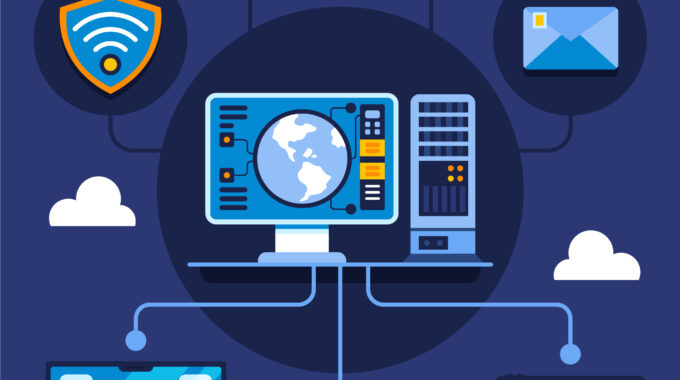Introduction To remain competitive in today's corporate environment, efficiency, speed, and precision are essential. Point-of-sale…

How to Transition Smoothly to a New POS System
Introduction
For any organization, implementing a new Point of Sale (POS) system can be a challenging undertaking. Everyday operations revolve around the Point of Sale (POS) system, which manages inventory, handles sales transactions, and stores customer information. Careful preparation, effective communication, and a thorough comprehension of your company’s needs are necessary for a transfer to be successful. This article will discuss how to successfully switch to a new point-of-sale system while minimizing inconvenience and optimizing advantages.
Assess Your Business Needs
It’s critical to carefully evaluate your business demands prior to making the move. Which particular issues do you have with your present system? What functionalities is your existing point of sale missing? Think about how the new system will help your business objectives and solve these problems. For example, you’ll need a point-of-sale system that works well with e-commerce platforms if you’re growing your business online.
Interact with several departments within your company to obtain information. It’s possible that the financial team and the sales team have distinct demands, and being aware of these differences will help you select a system that works for the whole company.
Research and Select the Right POS System
After defining your requirements precisely, look into the various POS systems that are out there. Choose one that fits the size, sector, and particular needs of your company. Take into account elements like scalability, integration with other corporate software, and ease of use. Don’t always base your decision just on cost; occasionally, a somewhat more expensive system may provide better long-term value by including features that a less expensive option does not.
Examining reviews and case studies can give you important information about how various point-of-sale systems function in actual use. Use free trials or demonstrations as well to experience the system before deciding on anything. You can confirm that the system is user-friendly and discover potential problems with this practical experience.
Plan the Transition
An effective switch to a new point-of-sale system depends on thorough planning. Create a thorough plan of transition that describes each stage of the procedure, from installation to training. To minimize interruption, this strategy should include a timeframe that takes into account each stage of the transition and makes sure the switch happens during a slow period of activity.
List the important parties involved, such as managers, IT personnel, and workers who will utilize the system on a daily basis. Assign roles and create a transparent communication schedule so that everyone is aware of developments during the shift.
Data Migration and Testing
Data migration is one of the most important phases in switching to a new POS system. This entails moving all pertinent data from the old system to the new one, including sales history, customer information, and inventory records. To prevent any interruptions in operations, it is imperative to guarantee the accuracy and completeness of this data.
Do a lot of testing before putting the new system into full use. This should involve executing multiple scenarios, including transaction processing, inventory updates, and report generation. Before going live, testing enables you to find and fix any possible problems.
Training and Support
To ensure a smooth transition, training is essential. The efficacy of even the most sophisticated point-of-sale system hinges on the proficiency of your personnel in its usage. Plan in-depth training courses for every staff member who will deal with the system. Adapt these workshops to the many jobs that employees hold inside the organization. For example, back office personnel, supervisors, and cashiers may all utilize the system in different ways and hence need distinct training.
After the initial training, offer continuing assistance to handle any queries or problems that may come up. This can entail putting together a help desk, writing a user manual, or scheduling additional training sessions. Making sure that your employees are comfortable and capable of utilizing the new system right away is the aim.
Go Live with a Backup Plan
When the new POS system is completely operational and starts processing actual transactions, it enters the “go live” phase. Think of a phased strategy, where the system is implemented gradually, beginning with a single department or location, to reduce risks. This enables you to handle any problems in a safe setting prior to expanding.
In the event that something goes wrong during the transition, always have a fallback plan. This can entail having a manual procedure in place as a backup or briefly maintaining the old system operating in parallel. Having a backup plan guarantees that, in the event of unforeseen difficulties, your company can carry on as usual.
Monitor and Optimize
After the new point-of-sale system is operational, the transition process continues. It is crucial to keep an eye on the system’s functionality and collect user input. Exist any reoccurring problems? Is the system fulfilling your company’s demands as planned?
Utilize this feedback to optimize the system and make the required changes. Evaluate the POS system’s performance on a regular basis and look for methods to make it more effective and efficient. This could entail adding new tools, upgrading software, or improving procedures in response to user input.
Conclusion
A new point-of-sale system transition is a big project that needs careful planning, clear communication, and continuous support. It is possible to guarantee a seamless transition that improves your company operations by evaluating your needs as a firm, selecting the best technology, and carrying out a well-planned strategy. It’s important to keep in mind that implementing new technology is not the only objective; you should also use it to drive growth, increase productivity, and enhance the customer and employee experience. A new point-of-sale system can be a strategically useful tool for your company if you use the appropriate method.




